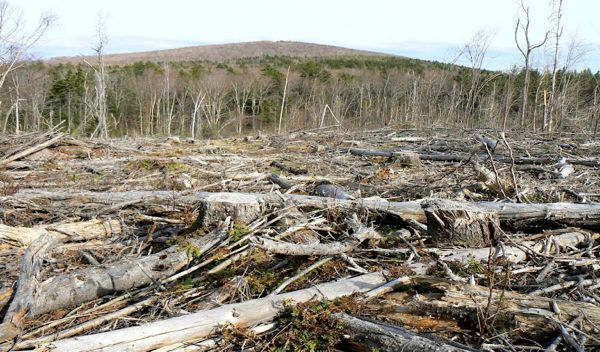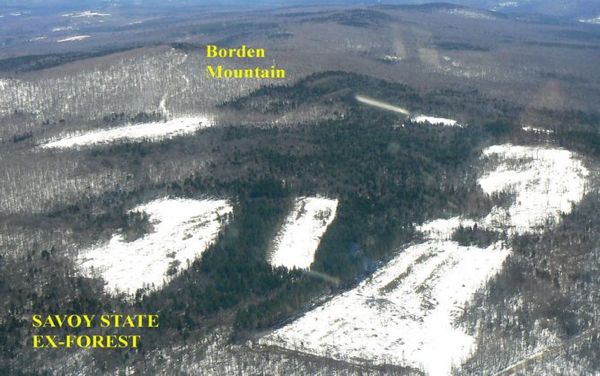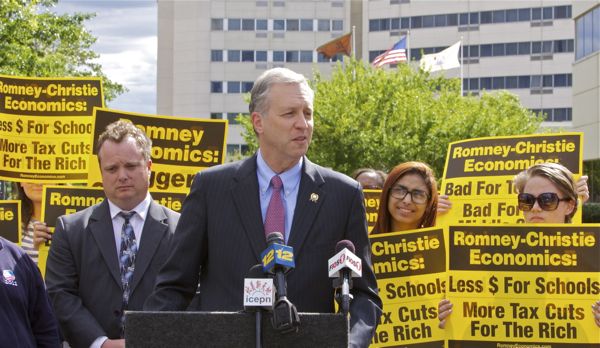Monmouth Water Emergency Illustrates Climate Change Risks and Reveals Deficits in NJ’s Adaptation Planning
NJ Highly Vulnerable But Not Planning for Climate Change Adaptation
DEP Lacks Capacity to Respond
Adapt or Die
[Important updates below]
Sometimes serendipity is truly scary.
I was reading a recent Special Report by the IPCC this morning “Managing the Risks of Extreme Events and Disasters to Advance Climate Change Adaptation” when I learned about the Monmouth County water emergency.
MIDDLETOWN — Monmouth County officials and New Jersey American Water Company expanded the boil-water advisory this morning to 22 towns one day after a 90-foot section of a wooden bridge, which propped up the water pipes, collapsed.
Immediately, I realized that the Monmouth event illustrated exactly what the IPCC Report was all about.
The pipeline break and water emergency reflect a complex interaction of factors, including:
- climate change induced extreme weather;
- high vulnerability (see NJ coastal hazards assessment)
- lack of effective risk assessment; and
- deficient adaptation planning, preparedness and response capacity.
I strongly urge that you read the full IPCC Report and consider how the Monmouth water emergency fits within that framework. The extremely relevant infrastructure and tourism discussion is in Chapter 4, starting on page 248.
While the facts are not in and it is way too early to go into a full analysis of the Report here as it applies to the Monmouth emergency, let’s very quickly overview the major contributing factors.
Perhaps this outline can frame and spur followup detailed investigations and begin to develop awareness of the need for NJ to take climate change adaptation seriously and dedicate resources to prevention, planning, and response capabilities.
1. Pipeline collapse example of climate change infrastructure risks
Apparently, the bridge and pipelinemay have been damaged during hurricane Irene. Climate change models predict more frequent and severe hurricanes.
Scientists have warned for years that NJ’s coastal zone is extremely vulnerable to hurricanes and storms. That vulnerability included water infrastructure systems.
The catastrophic failure of the pipeline occurred during a major extended heat wave, which greatly magnified the emergency response problems due to high water demand and greatly increased the negative economic impacts on summer shore tourism.
The heat wave is consistent with climate change model predictions.
2. NJ’s Infrastructure and Coastal Zone Are Highly Vulnerable to Climate Change Impacts
NJ’s water supply infrastructure is highly vulnerable.
Investments in infrastructure assets have not kept pace with need and there are huge infrastructure maintenance deficits.NJ water supply infrastucture has a $8 billion deficit.
In addition, this water pipeline was located above ground in the vulnerable coastal zone.
3. Lack of Risk Assessment, Adaptation Planning and Response Capacity
This deficit is revealingly illustrated by DEP’s own press release.
Note that the emergency declaration was made by Monmouth County, not the Governor or the DEP Commissioner pursuant to his responsibilities under the Water Supply Management Act
The Act puts the State DEP in charge, not County government.
Under the Act, infrastructure planning and the emergency response policy framework is supposed to be guided by the Statewide Water Supply Master Plan – but DEP is several years behind in updating and releasing that plan.
Similarly, the emergency response guidance to consumers comes from United Water, not DEP!
DEP has abdicated its responsibility and seems completely incapable of leading an effective response.
The really sad part is that no one even seems to recognize this massive set of problems and failures.
The IPCC Report certainly tees up those issues (EXCERPTS OF FINDINGS):
- Coastal settlements in both developed and developing countries are exposed and vulnerable to climate extremes.For example, the major factor increasing the vulnerability and exposure of North America to hurricanes is the growth in population and increase in property values, particularly along the Gulf and Atlantic coasts of the United States. Small island states are particularly vulnerable to climate extremes, especially where urban centers and/or island infrastructure predominate in coastal locations. Asia’s mega-deltas are also exposed to extreme events such as flooding and have vulnerable populations in expanding urban areas. Mountain settlements are also exposed and vulnerable to climate extremes.
- Extreme events will have greater impacts on sectors with closer links to climate, such as water, agriculture and food security, forestry, health, and tourism. For example, while it is not currently possible to reliably project specific changes at the catchment scale, there is high confidence that changes in climate have the potential to seriously affect water management systems. However, climate change is in many instances only one of the drivers of future changes in supply reliability, and is not necessarily the most important driver at the local scale. The impacts of changes in flood characteristics are also highly dependent on how climate changes in the future, and as noted in Section 3.5.2, there islow confidence in projected changes in flood magnitude or frequency. However, based on the available literature, there is high confidence that, in some places, climate change has the potential to substantially affect flood losses. Climate-related extremes are also expected to produce large impacts on infrastructure, although detailed Analysis of potential and projected damages are limited to a few countries, infrastructure types, and sectors.
- Transportation, infrastructure, water, and tourism are sectors sensitive to climate extremes. Transport infrastructure is vulnerable to extremes in temperature, precipitation/river floods, and storm surges, which can lead to damage in road, rail, airports, and ports, and electricity transmission infrastructure is also vulnerable to extreme storm events. The tourism sector is sensitive to climate, given that climate is the principal driver of global seasonality in tourism demand.
- Estimates of adaptation costs to climate change exhibit a large range and relate to different assessment periods.For 2030, the estimated global cost ranges from US$ 48 to 171 billion per year (in 2005 US$) with recent estimates for developing countries broadly amounting to the average of this range with annual costs of up to US$ 100 billion.
[Update #1: 7/1/12 – NJ State Climatologist and NJ Press corps remain in denial (read story). They claim that “derecho” (a kind of severe thunder storm) was the cause, but that is merely a description of the type of storm, not the cause of it! Again, reporters fail to connect the dots to the record setting heat wave (109) that provided the energy that drove the storm. Even the Washington Post story acknowledged a link:
On Friday, a historic, record-setting heat wave covered a sprawling region from the Midwest to the Southeast. All-time high temperatures records of 109 were established in Nashville and Columbia, South, Carolina and tied in Raleigh and Charlotte which hit 105 and 104. Here in Washington, D.C., the mercury climbed to an astonishing 104 degrees (breaking the previous record set in 1874 and 2011 by two degrees),our hottest June day in 142 years of records.
As the intensity of the heat wave, without reservation, was a key factor in the destructiveness of this derecho event – it raises the question about the possible role of manmade climate warming (from elevated greenhouse concentrations). It’s a complicated, controversial question, but one that scientists will surely grapple with in case studies of this rare, extraordinary event. –
[Update #2 –confirming exactly what we’ve been saying for some time and wrote below regarding the “derecho” that hit south jersey, the Asssociated Presss reports: This US summer is ‘what global warming looks like’
“What we’re seeing really is a window into what global warming really looks like,” said Princeton University geosciences and international affairs professor Michael Oppenheimer. “It looks like heat. It looks like fires. It looks like this kind of environmental disasters.”
Oppenheimer said that on Thursday. That was before the East Coast was hit with triple-digit temperatures and before a derecho — an unusually strong, long-lived and large straight-line wind storm — blew through Chicago to Washington. The storm and its aftermath killed more than 20 people and left millions without electricity. Experts say it had energy readings five times that of normal thunderstorms.
Fueled by the record high heat, this was one of the most powerful of this type of storm in the region in recent history, said research meteorologist Harold Brooks of the National Severe Storm Laboratory in Norman, Okla. Scientists expect “non-tornadic wind events” like this one and other thunderstorms to increase with climate change because of the heat and instability, he said – end]









